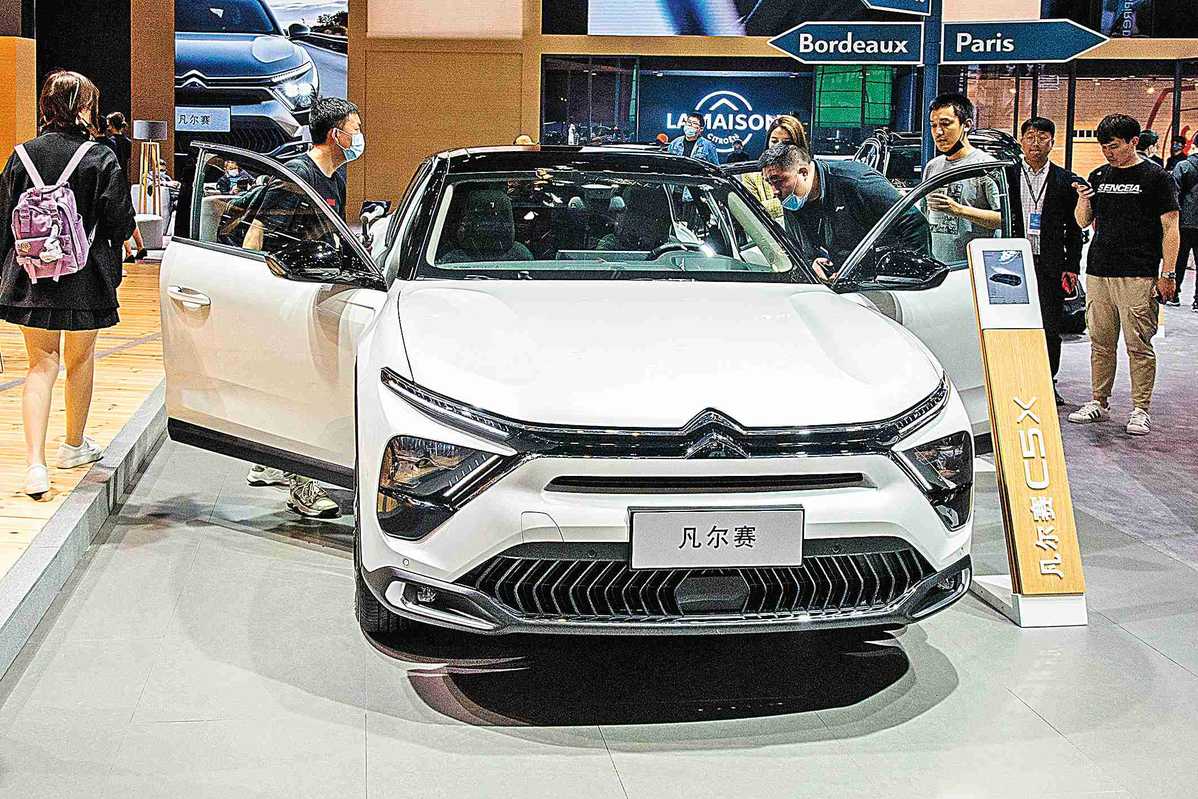Stellantis restructures its China business to gain a foothold

Stellantis is searching for a way to achieve greater status in the world's largest vehicle market comparable to other parts of the globe.
Formed via the merger of France's PSA and Italian-American Fiat Chrysler, the conglomerate owns 14 automotive brands from Fiat and Jeep to Peugeot and DS to Alfa Romeo and Maserati.
But deliveries last year through its two joint ventures in China combined stood at merely 120,000 units, despite ranking sixth globally for the year, with 5.38 million vehicles sold.
Though negligible, the sales figure in China was better in 2020.The joint venture with Dongfeng Motor-Dongfeng Peugeot Citroen Automobile-saw its sales doubled last year.
Stellantis is fostering this faint but encouraging sign of hope by pushing for changes in the 50-50 joint venture.
The National Business Daily reported that PSA is in talks with Dongfeng to give the French control of the Peugeot brand's operations in China, while the Chinese will have a larger say in how to run Citroen.
Both brands were previously popular in China, with their combined sales exceeding 700,000 units in 2015, but their buyers have since been lured away, and the two parents are divided on their lackluster performance, said analysts.
They said Dongfeng argued PSA would not listen to them about making their vehicles more appealing to local customers, while PSA complained that the Chinese should learn how to love their perfectly designed cars.
PSA's reluctance to introduce its latest models into China pushed car buyers away.
In the past three years, DPCA launched only one all-new model, the Citroen C5X crossover, a highly conservative move in a market where new model launches are a weekly thing.
Analysts said it is too early to tell whether the strategy will work for the joint venture but at least it will enable the two sides to test their respective ideas, which will be instrumental for them to reach a consensus in the future.
Stellantis is tackling the lackluster performance at another Chinese joint venture, GAC-Stellantis, as well.
Late last month, Stellantis said it would like to increase its equity from 50 to 75 percent, as China is removing the equity cap on carmaking joint ventures.
"The announcement is a key element of Stellantis' plan to set a new basis for its business in China," said the carmaker in a statement on Jan 27.
It said GAC has agreed to complete the deal, but GAC said the following day that they have not inked the deal.
GAC also expressed its discontent that Stellantis released the information without its agreement, a sign often seen in failing businesses.
Last year, the joint venture sold merely 20,000 vehicles, 50 percent of sales compared to the previous year.
Despite the possible moves, Stellantis has not yet revealed a concerted and comprehensive strategy for its China business.
In January 2021, CEO Carlos Tavares said the carmaker had created a task force composed of five top executives, to find out "what went wrong" for Fiat Chrysler and PSA in China and to work on solutions for a comeback.
One year later, Gregoire Olivier, chief operating officer of Stellantis China, said the company is "now finalizing our plans for China," which will be unveiled in March 2022.
Olivier said: "We consider (China) as a strategic market in terms of untapped potential."
Executives at other major international carmakers would agree on the potential. Volkswagen AG sold 3.3 million vehicles in China in 2021, and GM delivered almost half of its 6 million vehicles sold last year to Chinese customers.

